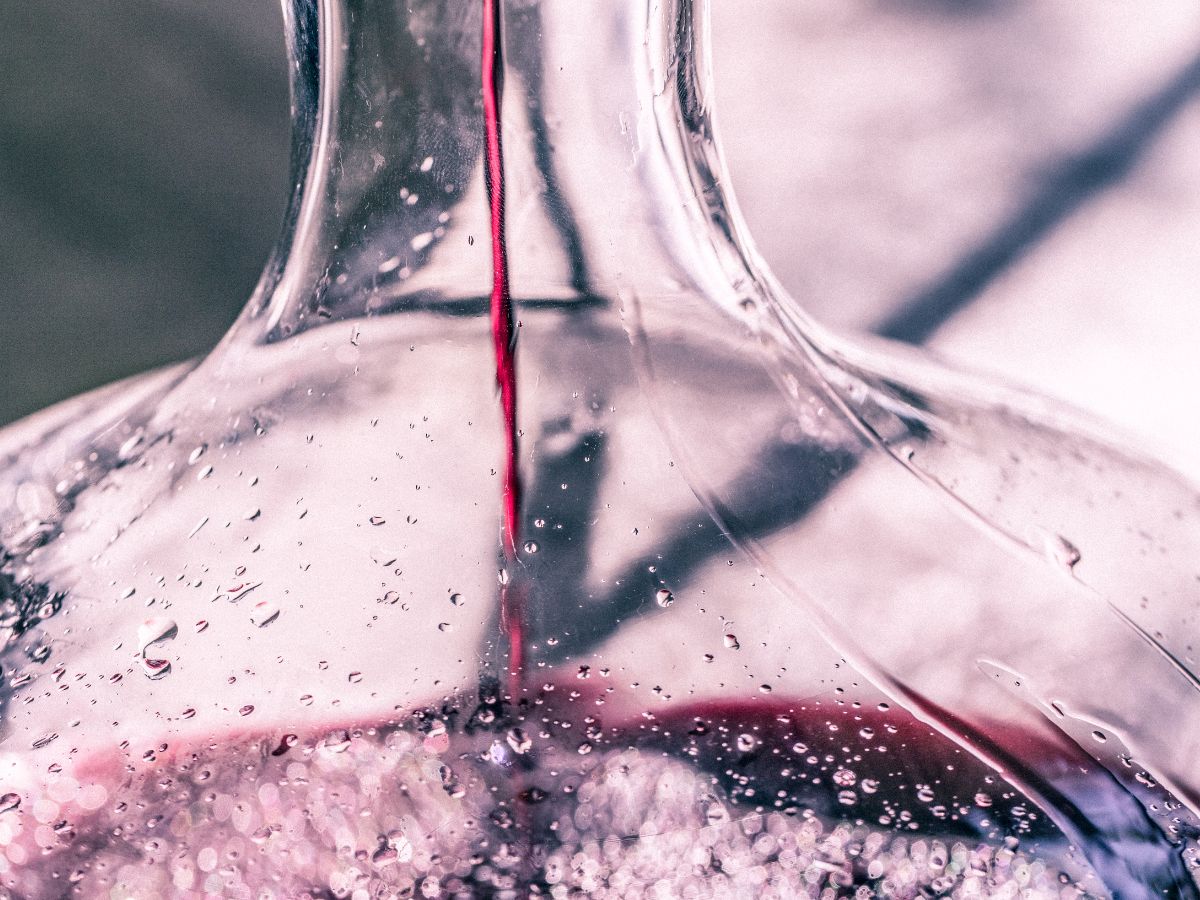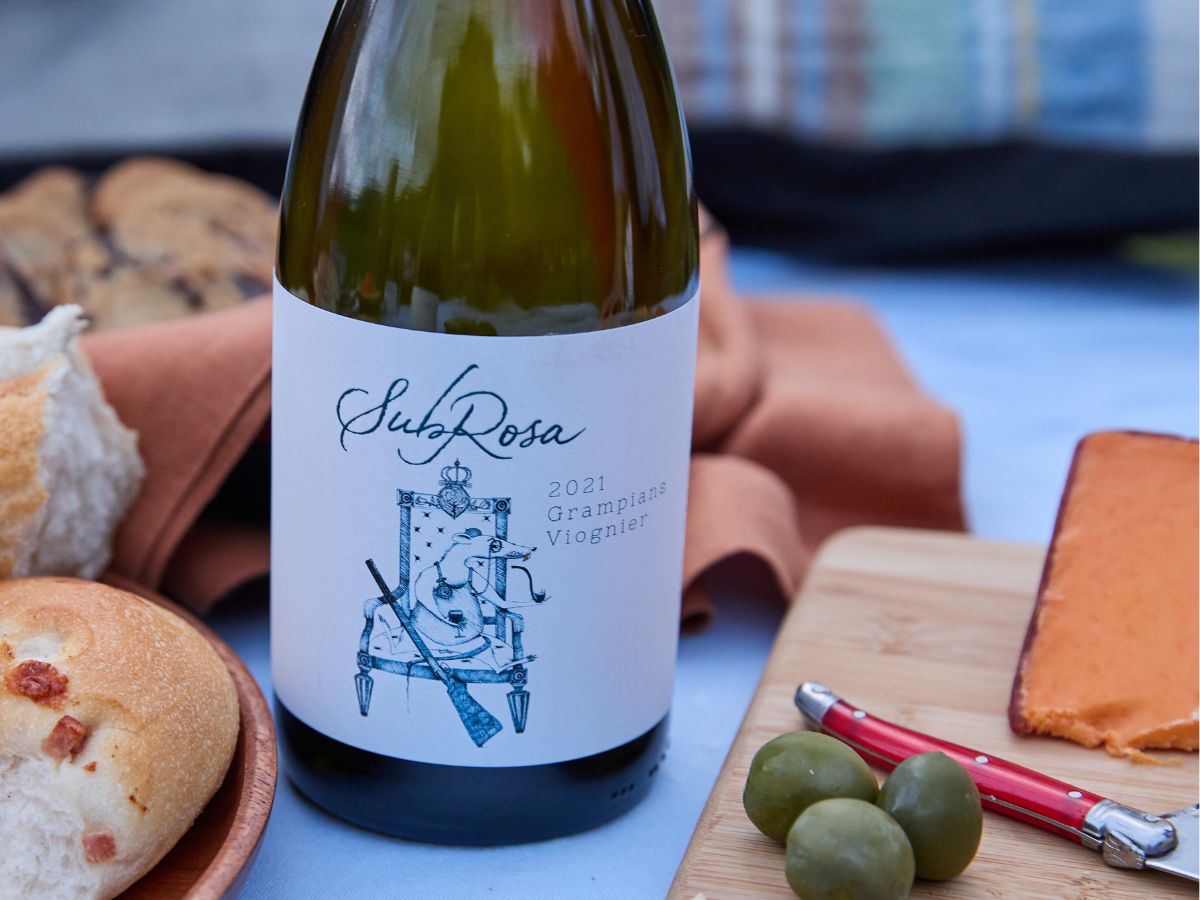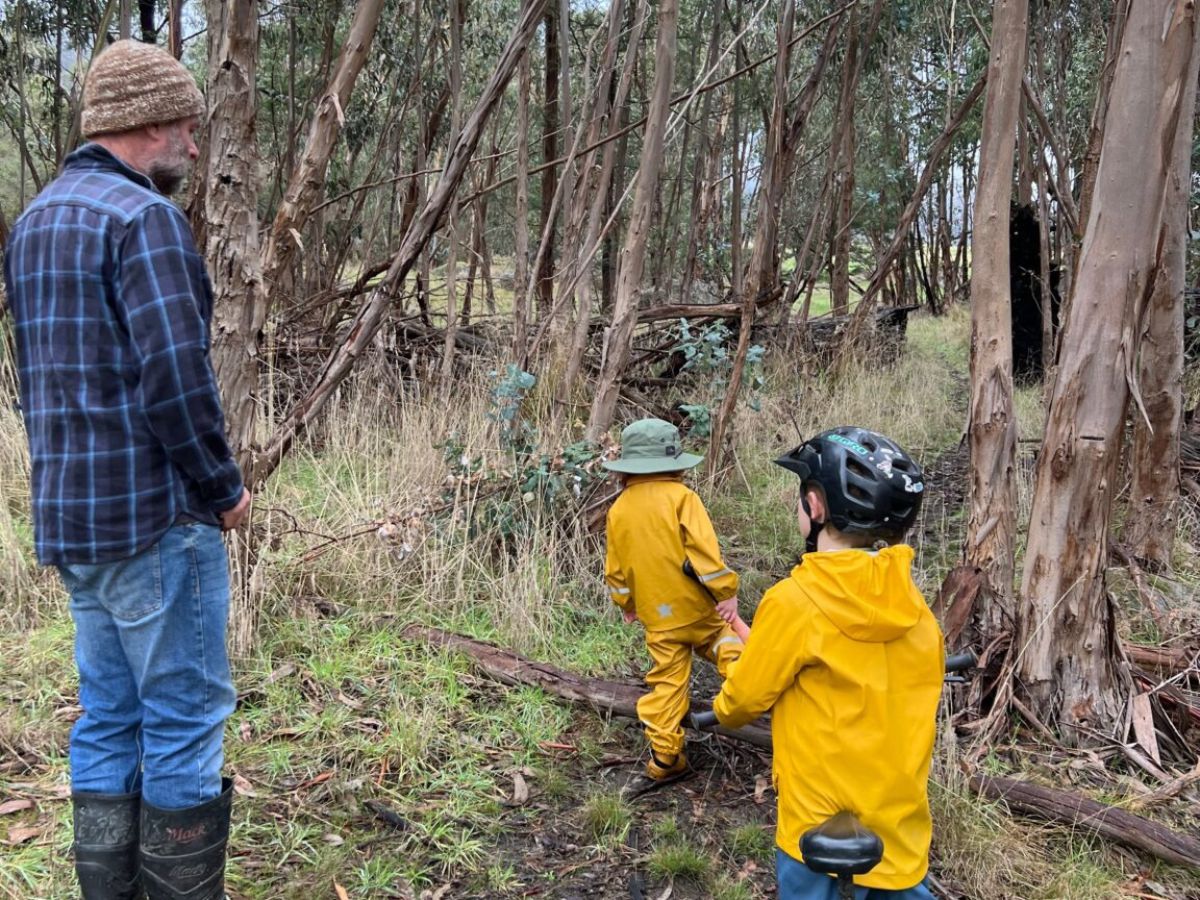Australia, known for its sunburnt land and vast deserts, is more diverse in climate than the well known poem alludes to. These hidden pockets aren’t confined to Tasmanian either. Hidden among the mountains and touched by the cooling breath of the Pacific Ocean, these regions, though inland and distant from the beaches, craft wines of a different kind – more refined, more elegant. The wines capture the essence of their surroundings, with flavours shaped by misty mornings and the patient, slow ripening of the grapes.
This describes our wine region, The Grampians, perfectly. It’s what convinced Adam to return, after working harvests all over the globe, including some of the most prestigious wine regions of the world.
In this article we’re going to explore what it means to be a cool climate wine region and why we love it so much. You’ll also learn that cool climate wines are very food friendly. Check out a list of recipes we compiled to inspire you to try this pairing.
Enjoy discovering the world of cool climate wines.
How important is temperature for growing wine grapes?
How important is temperature for growing wine grapes?
Terroir is a term frequently associated with wine. There are multiple ways of defining it just as there are countless wine labels on the shelf. Here’s a simple version so we can move on to temperature, the focus of this article.
It’s a combination of natural factors like soil, climate and landscape that influence the taste and quality of wine grapes, grown in a specific area.
All of these factors play a role in developing a wine’s flavour. However, climate plays one of the greatest of them all, as nothing can mature and ripen without the sun and a particular level of heat. In simple terms, the temperature can’t be too tropical, too arid and also too cold. The magic temperature range exists somewhere between 30° – 50° latitude, both north and south. This is why the major wine growing regions are clustered in these zones often called the wine belt. Below is a world map to see where the major wine regions fit within this zone.

What temperature for wine growing is classified as cool climate?
What temperature for wine growing is classified as cool climate?
A cool climate wine region in Australia is an area where the growing season temperatures are lower. During spring, when grapes are budding and experiencing vigorous growth, the temperatures are consistently around 22-23 during the day, dropping to 10-12 at night. These lower temperatures slow the ripening process of the grapes, allowing for layers of flavour to develop over time.
Why does it matter that grapes ripen slowly?
Why does it matter that grapes ripen slowly?
Slow ripening of grapes is a key factor in producing high-quality wine because it allows the grapes to develop more complex flavors and retain their natural acidity. When grapes ripen slowly, they have more time to build up the sugars and aromatic compounds that give wine its depth and character. At the same time, the cooler temperatures in a slow-ripening process help preserve the acidity, which is crucial for balancing the sweetness and keeping the wine fresh and vibrant. This balance between sugar and acidity is what makes a wine well-rounded and enjoyable to drink.
Which Australian wine regions are considered cool climate?
Which Australian wine regions are considered cool climate?
Victoria – The Grampians, Yarra Valley, Macedon Ranges, Alpine Valley, King Valley and Beechworth.
New South Wales – Orange.
South Australia – The Adelaide Hills.
Tasmania.
Canberra.
Check out the climate zone map for Australia and you’ll see the Grampians is located right in the cooler blue zone.
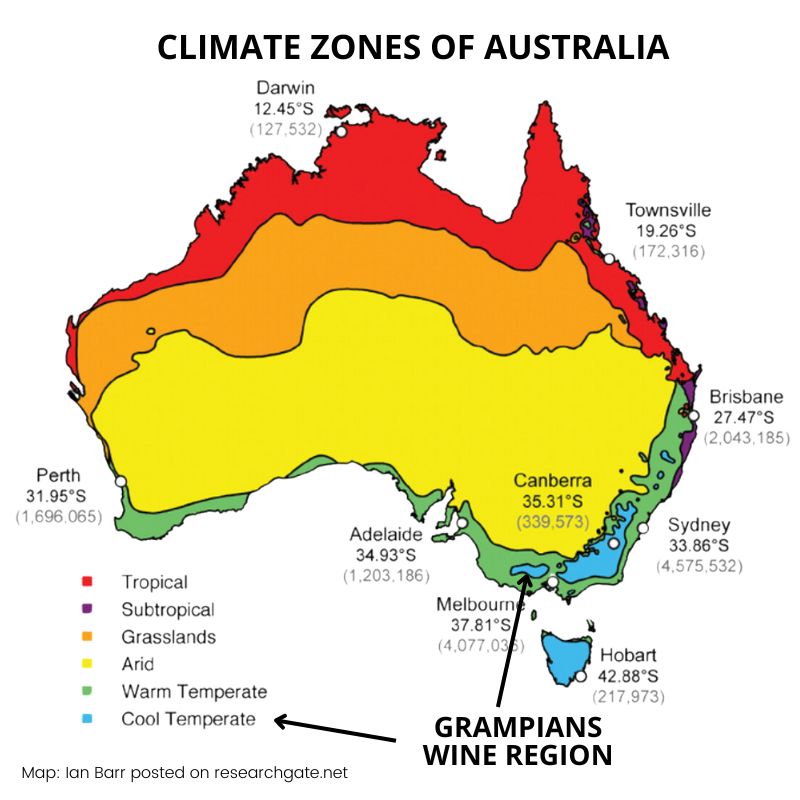
How different are the temperatures in some key wine regions in Australia?
How different are the temperatures in some key wine regions in Australia?
Let’s have a look at the average highs and low of particular wine regions. In this chart we compared the Barossa Valley, The Grampians and the Tamar Valley in Tasmania. Notice how cool the Grampians is in comparison to the Barossa Valley, especially during the growing season which is typically between September (bud break) to April (harvest). The Grampians is frequently 3 degrees lower.
Now compare this to the Tamar Valley in Tasmania, a region most would understand to be cool climate. The second graph drills into the differences between these two regions further. Yes The Grampians reaches higher temperatures during spring and summer, but look at the monthly low temperatures during the growing season. What this shows is the dramatic cooling off at night time experienced in The Grampians, dropping to similar temperatures of the Tamar Valley. Essentially this gives the grapes time to rest before they’re subjected to the heat again the next day. An ideal slow ripening process.
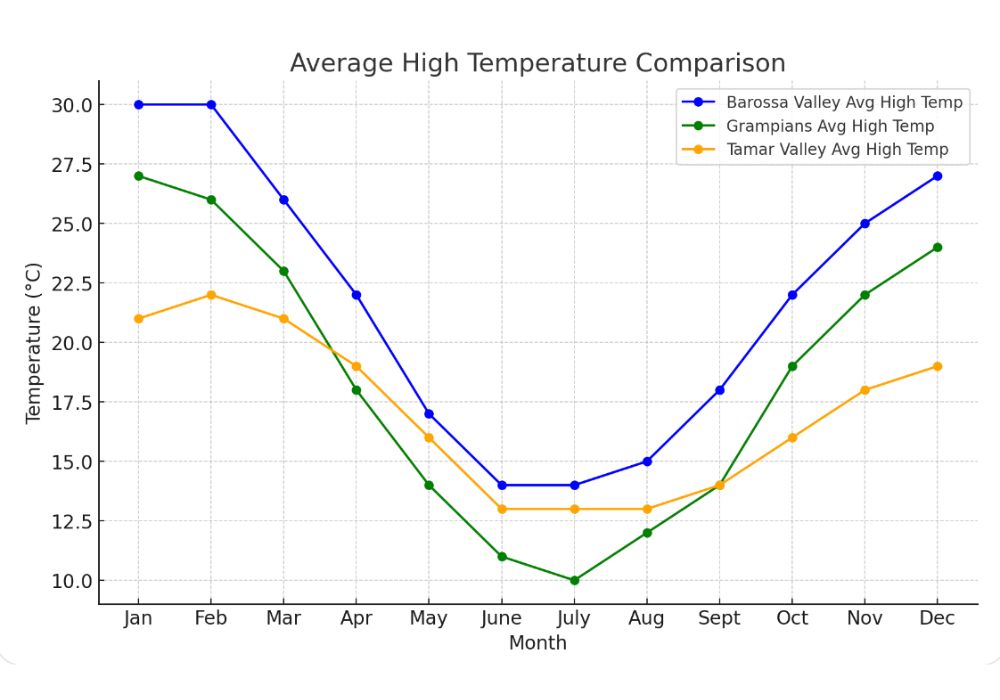
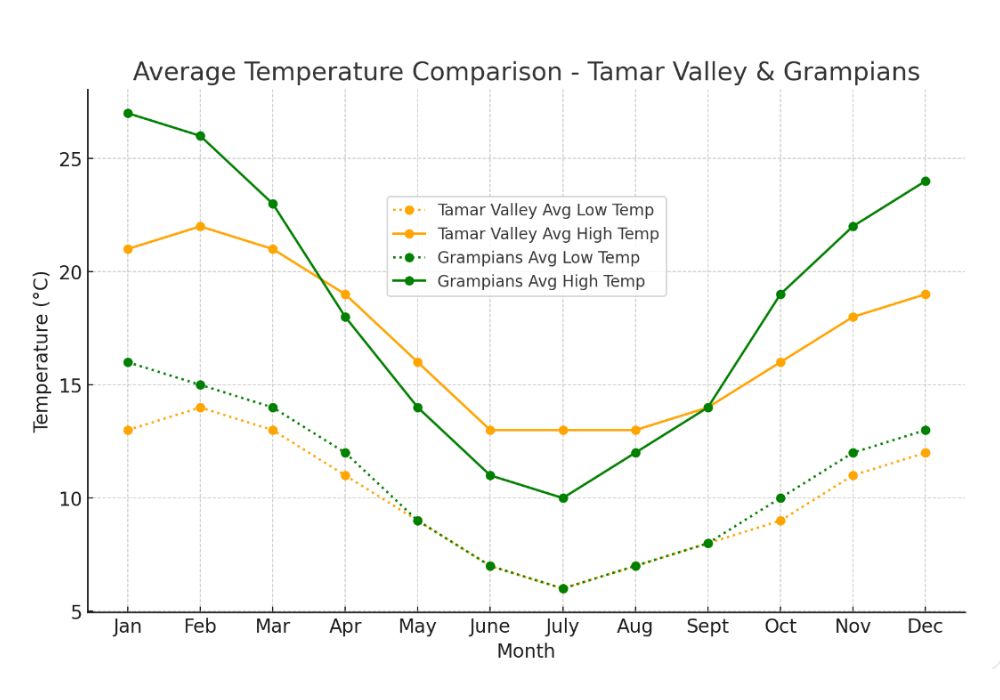
Which varietals are best suited to a cooler climate?
Which varietals are best suited to a cooler climate?
Any grape varietal can grow in a cool climate region. However, this doesn’t mean they thrive. In cooler years, only those best suited to lower temperatures will ripen sufficiently.
In general, these are the varietals that enjoy a cooler climate home.
Viognier: A cool climate viognier tends to exhibit more vibrant acidity and elegant fruit flavours like peach, apricot, and green apple, along with floral notes of honeysuckle and jasmine. The wine is typically more balanced and lighter in body, with moderate alcohol and refined texture compared to its richer, warmer-climate counterparts.
Riesling: Cool climate riesling is known for its crisp acidity and lively, fresh flavours like lime, green apple, and lemon. It often develops mineral and floral notes, with a leaner body and the potential for long aging, creating complex, zesty wines with excellent balance.
Shiraz: While shiraz is typically associated with warmer regions like the Barossa Valley, it also thrives in cool climates. In these conditions, it develops more pronounced peppery and spicy notes, along with a leaner, more refined structure, offering a distinct elegance compared to its fuller-bodied, warm-climate counterparts.
Cabernet: A cool climate cabernet is refined and structured, with higher acidity and a fresh, vibrant character. It features subtle black fruit flavours like blackberry and blackcurrant, along with herbal notes like mint. The tannins are firm yet smooth, giving the wine an elegant balance.
What are the characteristic differences between a cool climate shiraz and a warm climate shiraz?
What are the characteristic differences between a cool climate shiraz and a warm climate shiraz?
Cool climate shiraz tends to have a more refined and elegant profile. The grapes ripen more slowly in cooler temperatures, which allows them to develop complex flavours while retaining higher acidity. This results in a wine with bright fruit flavours, like blackberry or plum, along with distinct spicy, peppery notes. The acidity gives the wine a fresher, more vibrant taste and often makes it more suitable for aging. Cool climate shiraz is typically medium-bodied and balanced, with a focus on finesse rather than power.
Warm climate shiraz is often richer and more full-bodied. The warmer temperatures cause the grapes to ripen faster, leading to higher sugar levels and, consequently, higher alcohol content. This creates wines that are bolder, with jammy, ripe fruit flavors like dark berries or cherries, and sometimes a touch of chocolate or vanilla from oak aging. Warm climate shiraz is usually less acidic and more fruit-forward, with a rounder, softer mouthfeel.
Who was influential in the cool climate wine region movement in Australia?
Who was influential in the cool climate wine region movement in Australia?
The late Trevor Mast of Mount Langi Ghiran is considered the master influencer of cool climate wines. In the 1980’s he crafted incredible shiraz from his vineyard estate in the Grampians. It was the new style of shiraz, having distinctive black pepper character, yet elegant and well-structured. His winemaking put Mount Langi Ghiran and the Grampians on the map as a serious wine region in Australia.
Why do we mention Trevor?
Trevor was Adam’s mentor.
Adam’s father Roger was a diesel mechanic who Trevor relied on to keep his viticulture machinery in good working order. In 1998, at the age of 18, Trevor asked Adam to work with him. It was from this connection Adam developed his love of cool climate winemaking which continues to this day.
“I was so lucky to have him as my mentor at this early stage of my career. His enthusiasm, passion and innovative approach to winemaking and viticulture was contagious.”
Read more of Adam’s winemaking story here.
Why are cool climate wines so food friendly?
Why are cool climate wines so food friendly?
Cool climate wines embody moderation, often described as elegant and well-structured. While not overpowering, they still maintain vibrant fruit flavours. With a slightly higher acidity, they pair wonderfully with food, cutting through rich, fatty dishes and refreshing the palate between bites. This brightness enhances the food’s flavours, highlighting its nuances without making the wine feel heavy.
And there is also the moderate tannin level. This adds a subtle grip that enhances the texture of the food, especially proteins like meats, while remaining smooth enough to allow the flavours of both the wine and the dish to shine through.
Overall the beauty of a cool climate wine is that it complements rather than overshadows the meal. Whether it’s paired with roasted meats, grilled vegetables, or even spicier dishes, a cool climate shiraz brings out the best in the food, not taking the centre stage, rather making each bite more enjoyable.
We’ve compiled a list of cool climate wine and food pairing recipes for you to try. Some are as simple as a grilled steak with our 2019 Grampians Pyrenees Shiraz or try the peach, tomato & burrata salad with a glass of SubRosa Viognier on a warm summer’s day.
Cool climate wines age well.
Cool climate wines age well.
James Halliday, renowned wine writer and critic said in his book Varietal Wines, wines of the Grampians have,
“…supple, silky feel; a strong spicy accent to the cherry and mint fruit; and tannins which are almost invariably fine. While alcohol levels are modest, and the wines typically only medium bodied, they have impeccable balance…moreover…they can live for 30 to 60 years without breaking up and decaying.“
How do wines age well for 30 to 60 years? Cool-climate grapes hold onto their natural acidity, which keeps the wine’s structure intact and its freshness alive. This allows it to grow more complex as time passes.
Grampians Shiraz, grown in the region’s cool air, has just the right mix of acidity, tannins, and fruit. The cool weather keeps the acidity high, and the slow ripening gives the tannins time to build. Together, these traits make it a wine that’s built to last.
What are the challenges of growing grapes in a cool climate wine region?
What are the challenges of growing grapes in a cool climate wine region?
The list of challenges are long…
At the top is achieving ripeness. Grapes need a certain level of sunshine to reach sufficient sugar levels. It’s simple biology. Not enough sun and the grapes don’t mature.
What happens to the wine flavour when the grapes don’t ripen?
The wine can have a more tart and sharp taste due to higher acidity and lower sugar levels. Depending on the varietal, the flavours may lean toward underripe or green notes, such as green apple, green capsicum, or even vegetal characteristics, rather than the rich, ripe fruit flavours typically associated with fully ripened grapes. The tannins in red wines may also be harsher or more astringent, leading to a less balanced and less enjoyable wine overall. This can make the wine feel less rounded and more one-dimensional on the palate. There have been some years we don’t produce a wine varietal because Adam wasn’t happy with the maturity of the grapes, for instance, we skipped the 2020 shiraz but 2021 was to our liking.
The other risk we face every year due to the long season is autumn rain. The harvest in The Grampians tends to be later than most other regions. The longer the season the more chance for rain to occur. Rain during harvest is bad news because it can dilute flavours and sugar content, leading to a less concentrated wine. Additionally, excessive moisture can encourage the growth of mould and rot, potentially ruining the crop before it can be harvested.
Less related to the length of the growing season but still a challenge we face every year in our cool climate is frost. It could be a late frost after bud break or an early frost around harvest time. Frost during bud break can damage or kill the young buds, leading to reduced yields. And a frost during harvest can damage the grapes, causing them to shrivel and lose their flavour. Either way, the quality is not to our standard.
So why do we want to grow grapes in a cool climate region like The Grampians? When it works, it really works! Grapes are an agricultural product, subjected to the whims of nature but that just makes it exciting. Understanding the weather is critical. But even more important, is being in tune with your vines. This is why Adam tries more than 100 grapes or more a day leading up to and during harvest.
Every year is different. Every vintage is unique. Isn’t that what life is all about!
Are you curious to try our cool climate wines now?
Related Stories

